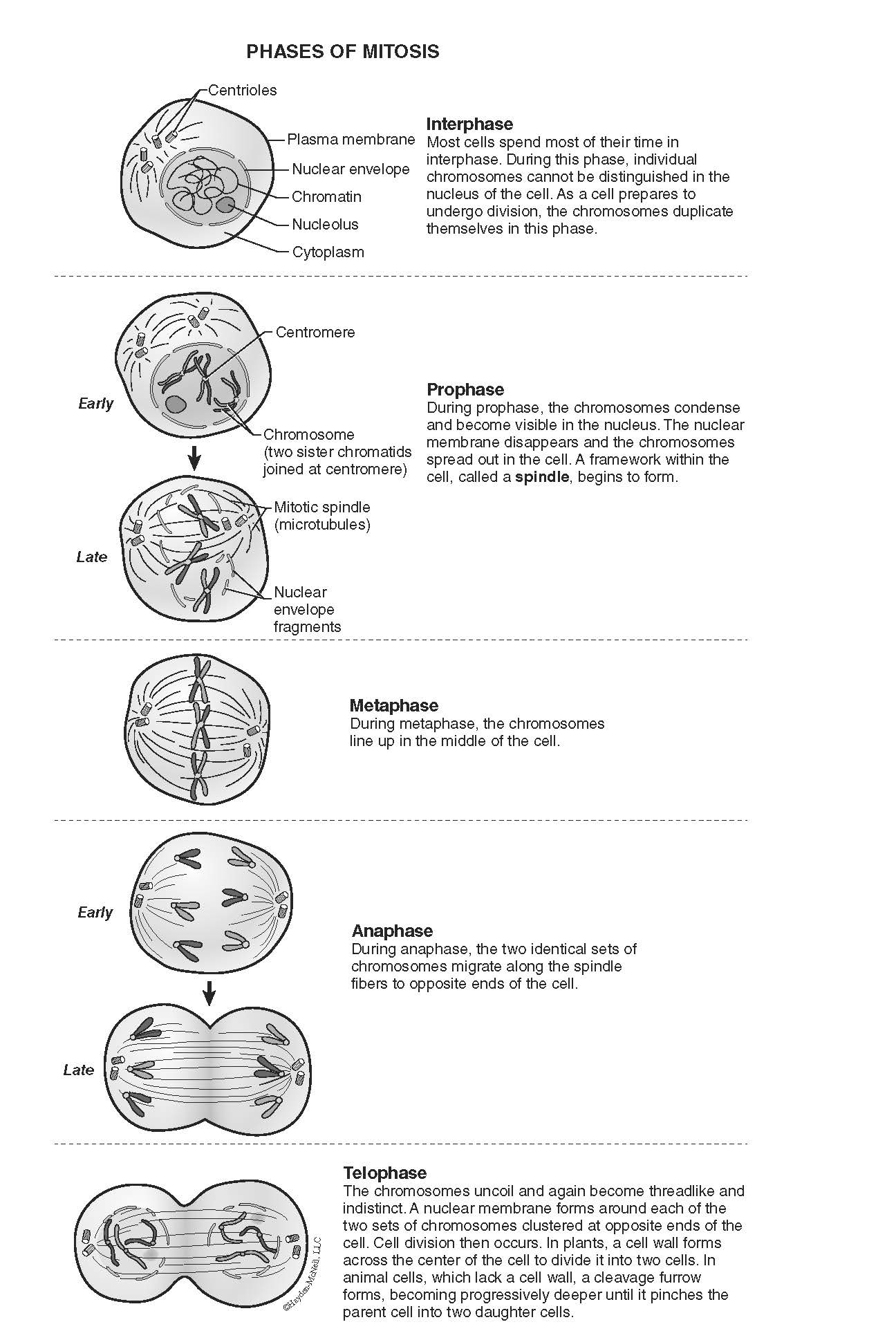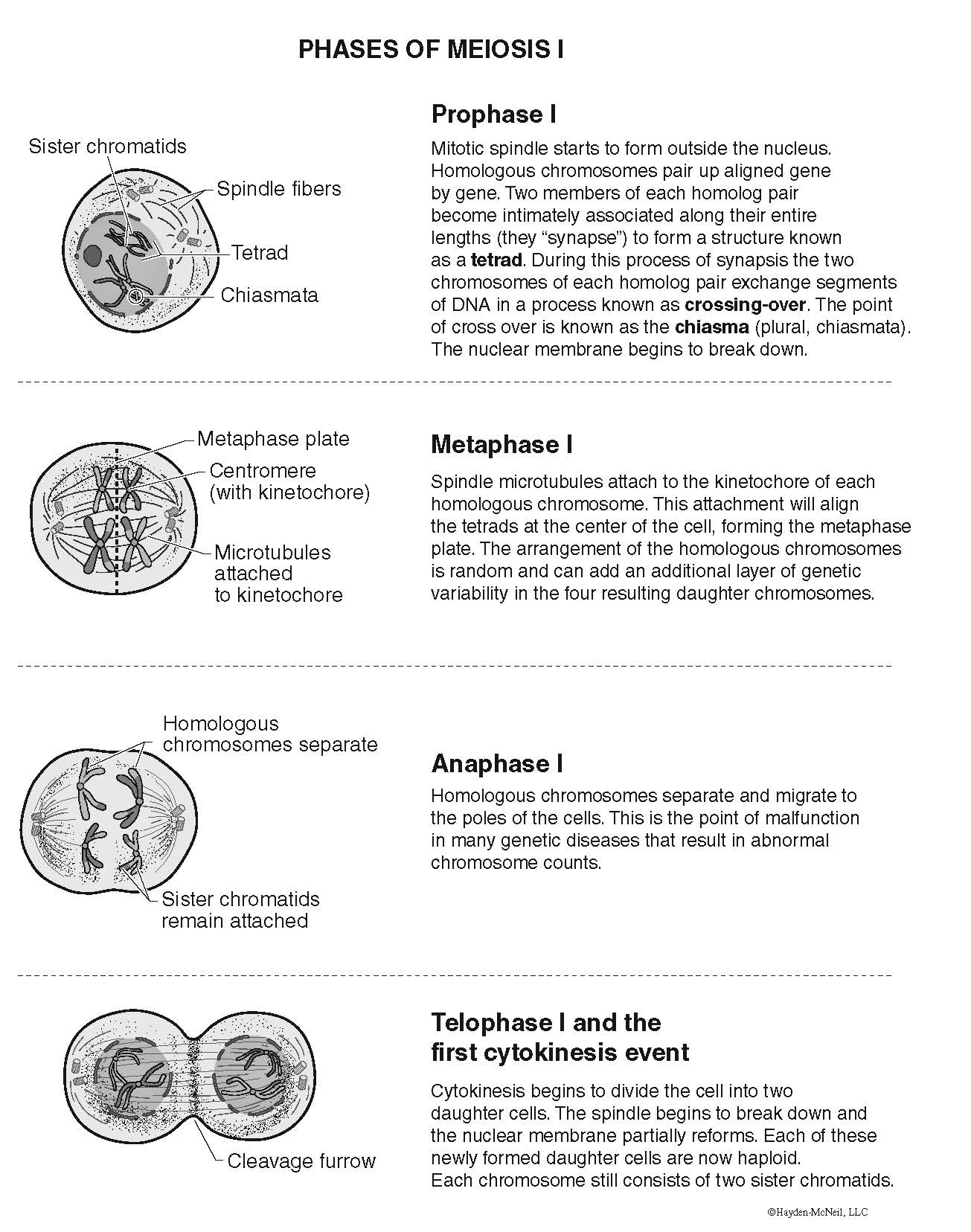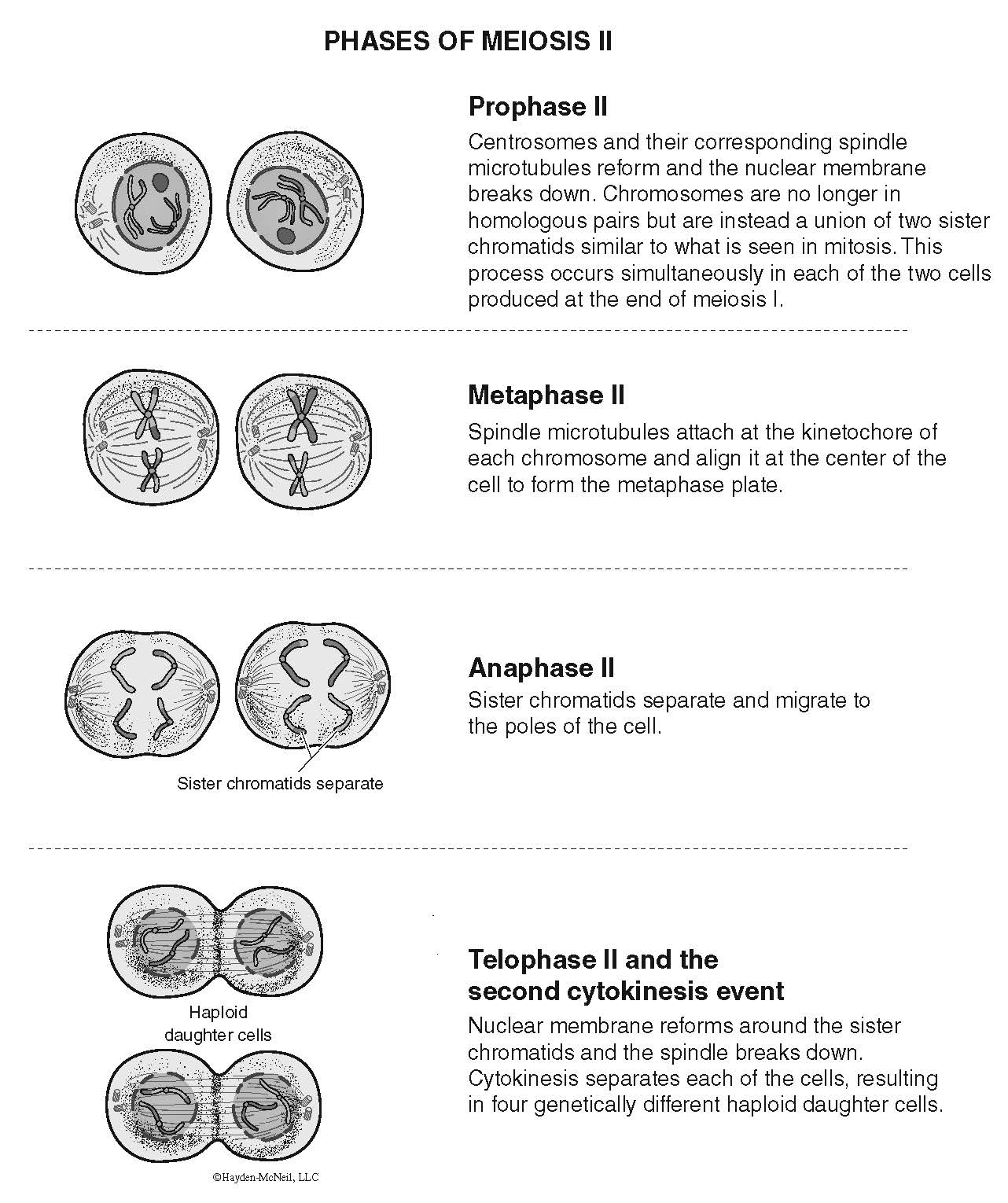Chapter 1. Mitosis and Meiosis
Mitosis and Meiosis
Mitosis and Meiosis
by Lawton L. Roberts and Eric Goff
The cell cycle is an ordered sequence of events in the life of a cell from its origin in the division of a parent cell to its own division into two. The eukaryotic cell cycle consists of M phase (mitosis and cytokinesis) and interphase, which is comprised of G1, S, and G2 stages. The major event of the interphase is chromosome replication, or DNA synthesis (S phase). G1 and G2 (G standing for gap) represent the portions of the cycle between DNA synthesis (S) and mitosis (M). During G1 the cell prepares for DNA (chromosome) synthesis and during G2 the cell prepares for mitosis, where the chromosomes will be divided and redistributed. The cell cycle is a heavily regulated process, and cancer can arise when cells lose control of the cell cycle and grow unregulated.
Mitosis
Mitosis
Mitosis occurs only in eukaryotic cells. Mitosis (or M stage) is the process by which a cell that has previously replicated each of its chromosomes separates them into two identical sets of chromosomes, each set in its own new nucleus. Mitosis is division of the genetic material of the nucleus. It is usually immediately followed by cytokinesis (division of the cytoplasm). Mitosis and cytokinesis together define the mitotic (M) phase of the cell cycle. The division of the mother cell produces two genetically identical daughter cells. Timewise M phase accounts for approximately 10% of the cell cycle. The rest of the cell cycle is interphase, in which the cell spends the majority of its time and performs the majority of its functions, including preparation for cell division.
Mitosis functions in growth, replacement of damaged and old cells, and asexual reproduction in some organisms. Growth from childhood to your body size today required mitosis. Whenever cells or tissues are damaged, new cells are generated to replace them via mitosis. Thus, mitosis works to maintain homeostasis. Mitosis is generally divided into four phases: prophase, metaphase, anaphase, and telophase, each of which are briefly discussed on the following page.

Meiosis
Meiosis
Meiosis is a special type of cell division in sexually reproducing organisms. It consists of two rounds of cell division but only one round of DNA replication. It results in four daughter cells with half the number of chromosomes of the parent cell.
Meiosis only occurs in the production of gametes. Gametes are male and female sex cells (sperms and eggs). They are unique because they contain half the number of chromosomes of a “normal” cell. In humans, normal body cells, also known as somatic cells, contain 46 chromosomes. This number represents the diploid chromosome count and means that these cells contain two full sets of chromosomes, one set (23 chromosomes) from each parent. Gametes, however, only contain 23 total chromosomes in each cell. This number represents haploid chromosome count and means that they only have one copy of each of the 23 human chromosomes. Production of haploid gametes is an important aspect of sexual reproduction. In order to maintain the diploid chromosome count of 46 in each of the developing somatic body cells of a fertilized human embryo, the cells that join together during fertilization, sperm and egg, must each contain half of this diploid number. Meiosis is responsible for this chromosome reduction and only produces these haploid daughter cells. Meiosis is a process consisting of two rounds of division resulting in four daughter cells. The progression through prophase, metaphase, anaphase, and telophase is much the same as it is in mitosis, but meiosis completes two cycles of these steps as compared to only one in mitosis. These two passages are respectively referred to as meiosis I and meiosis II and will ultimately produce four daughter cells as compared to only two from mitosis. There is no DNA replication between meiosis I and meiosis II. Meiosis is a process that results in genetically different daughter cells. This means that each of the four cells produced in meiosis will have a different arrangement of alleles for specific genes within them (i.e., one cell may have the alleles for blonde hair while another may have the alleles for black hair). This genetic variability is introduced due to an event known as “crossing-over” as well as by the random arrangement of chromosomes during meiosis I, both of which will be discussed further on the following pages. Genetic variability is important in sexually reproducing individuals because it allows for variation in the phenotypes of offspring. Mitosis by comparison only produces genetically identical daughter cells. While many of the stages in nuclear division are similar, please note the unique factors listed on the following pages in the description of meiosis I and II.


Exercise
Observing Mitotic Specimens
You will observe plant and animal mitosis using a microscope and prepared slides.
Onion root tip is a specimen of plant tissue. In a growing plant root, the cells at the tip of the root are constantly dividing to allow the root to grow. Because each cell divides independently of the others, a root tip contains cells at different stages of the cell cycle. This makes a root tip an excellent tissue to study the stages of cell division.
Fish blastula is a specimen of fast-dividing animal cells. The blastula is an early stage of embryo development. It represents a period in the organism’s life when most of the cells are constantly dividing. Moreover, the dividing cells have very large and easily visible chromosomes, so it’s easy to find many cells in each stage of mitosis.